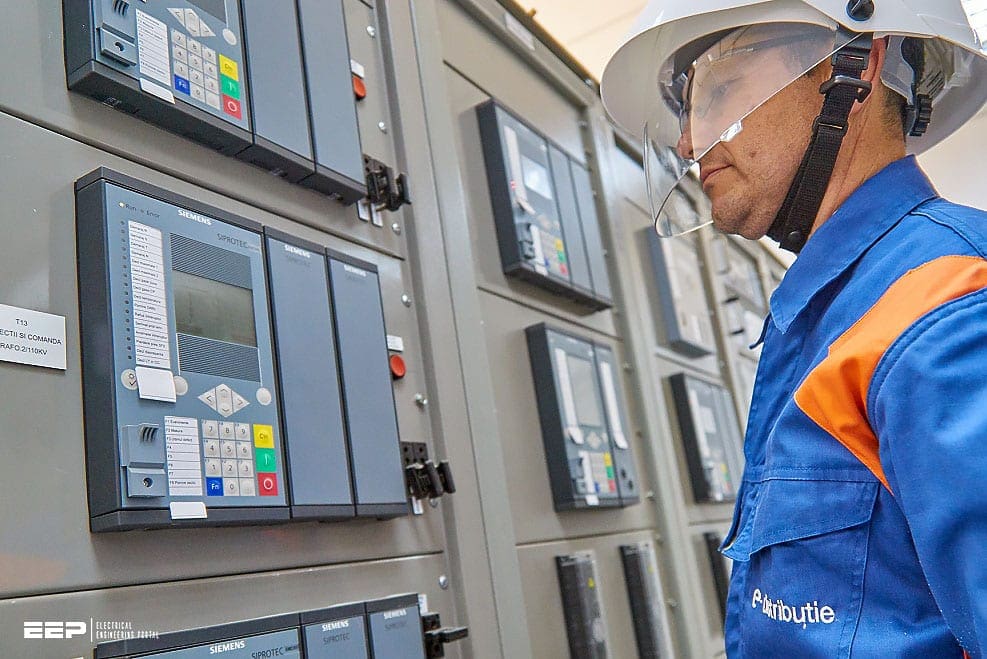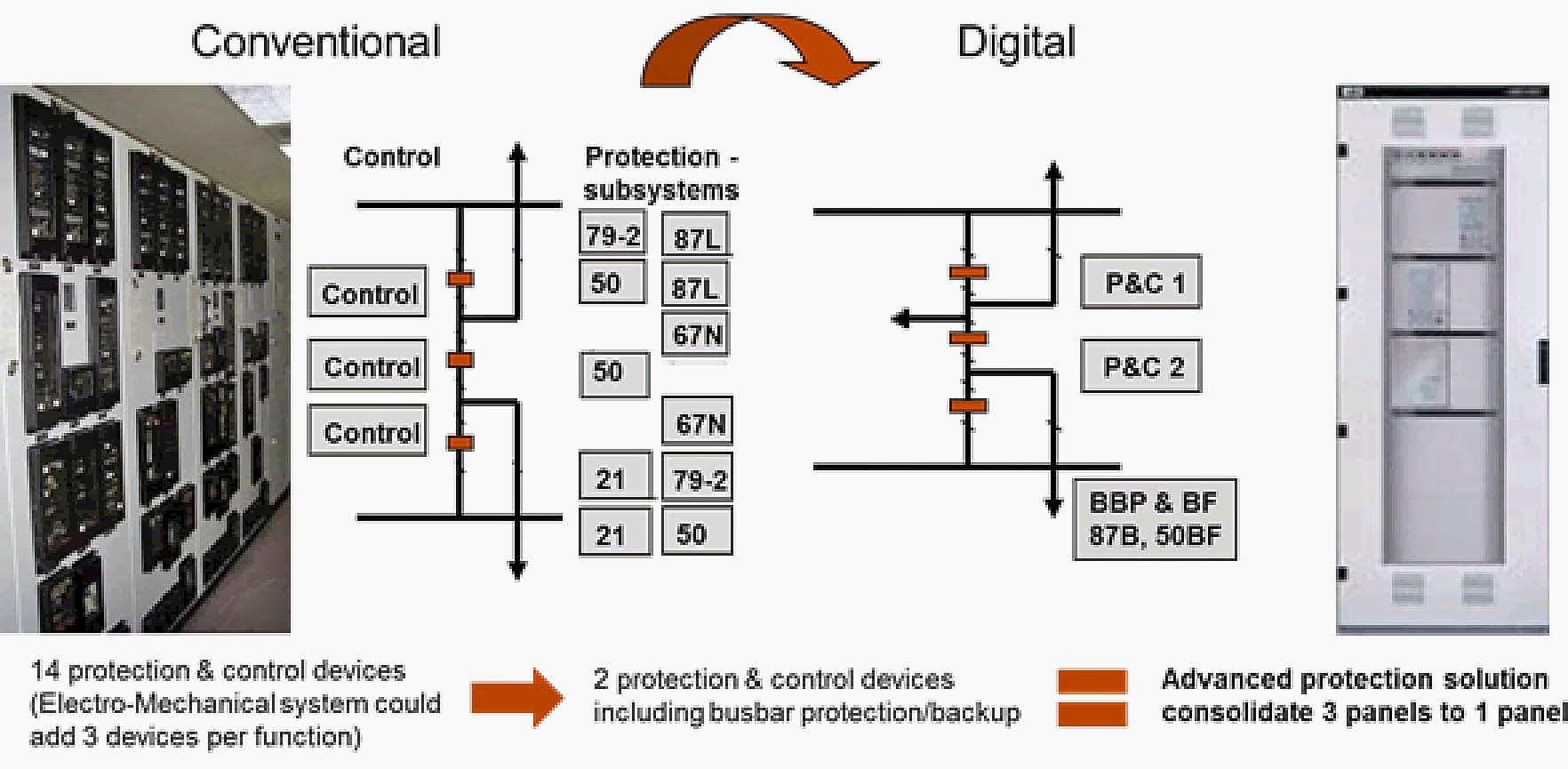Protection in modern substations
Today’s advanced digital protective relays utilize high speed communication to replace copper wires for inter-bay control, safety interlocking and even breaker trip and closing. Modern sensor technology also allows for the digitization and analog acquisition in the switchyard replacing hazardous inductive CT and PT circuits with process bus communications.

Gone are the days of the simple electromechanical relay without firmware and communication interfaces. The fact exists that protection and control systems have changed significantly in the past decade and will continue to change with technology advancements.
The digital world has impacted the protection system from the introduction of microprocessor based relays in the 1980s to protection relays with communication interfaces in the 1990s.
The Digital World has brought many benefits but also introduces challenges. This paper will focus on the impact of the protection and control system as a result of microprocessor relay introduction in the 1990s. It will discuss key issues the protection and control engineer has encountered in the past and will face with the deployment of the advanced protective relay.
As well the paper will address some protection issues such as; since fiber optic current sensor systems have no iron, and no CT saturation, the differential relay need not have multiple slopes to account for CT performance, just a minimum pick up thus increasing the sensitivity several fold.
The Standard – IEC 61850
First multifunction microprocessor relays were developed in the early 1980s. One was based on the Washington State University Master’s Degree Thesis by Ravi Iyer. He joined Brown Boveri Corporation under the mentorship of Stanley Zocholl to design the distribution protection unit becoming the first multifunction microprocessor relay in 1984.
This relay performed three-phase and ground instantaneous and time overcurrent protection, multi-shot circuit breaker reclosing and integrated per phase metering in a single device that was slightly larger than two single phase electromechanical overcurrent relays.
The innovation of the modern digital system roots from this era by the industry pioneers understanding the interworks of the electromechanical relationship to engage the revolutionary computer scientist replacing induction discs and spring constants with data acquisition, digital conversion and four point algorithms.

These early devices were based on 8-bit microprocessors and programmed in highly optimized assembly source code as the algorithms had to be extremely efficient and program memory size of 64 kilobytes was a luxury.
The microprocessor relay is our industries first venture into The Digital World and it has revolutionized our protection and control systems. The key benefit of the microprocessor relay has been the significant reduction of panel space required to accomplish the same protection system.
Figure 1 depicts a line protection system for 1 ½ breaker arrangement. In the Figure 1 example, the protection function indicated by the ANSI relay elements were traditionally implemented utilizing discrete relays requiring several relay panels to protect this scheme.
The protection and control system may seldom be called upon to operate until the abnormal condition threatens the apparatus. It is this instance that the system must operate to protect the utility assets.
A major benefit of the modern protection devices is the advanced self-diagnostics and self-supervision to ensure the highest availability of the system. Electromechanical and solid state relays were only found to be non-operational when a fault occurred resulting in a misoperation or during routine testing.
The modern protection device has advanced diagnostics to ensure performance or indicate of pending problems.

Today, the digital world continues to morph as modern primary apparatus embeds digital technology and the benefits of non-conventional instrument transformers further improve system performance and personnel safety. These enablers on the primary system process level will continue revolutionizing the next generation of system protection, control and automation.
The Digital Systems
In the digital system, sampled analog values are communicated according IEC 61850 9 2 from merging units or non-conventional instrument transformers (NCITs) to the protection and control IEDs and trip commands are sent as IEC 61850 GOOSE messages to the circuit breaker interfaces.
By this, the communication system becomes a critical part in the fault clearance chain affecting the total fault clearance time of the protection system.
| Title: | Voltage and current measurement in modern high voltage substations – Master of Science Thesis by Dias Serikbayev at CZECH TECHNICAL UNIVERSITY IN PRAGUE, Faculty of Electrical Engineering, Power Engineering Department |
| Format: | |
| Size: | 1.7 MB |
| Pages: | 56 |
| Download: | Here 🔗 (Get Premium Membership) | Video Courses | Download Updates |
Recommended – Five phenomena that could collapse the entire power system


Am into electrical engineering jobs and I need to know more about electrical engineering trning how can I see you guys
“the first multifunction microprocessor relay in 1984”
Not quite true
GEC MCGG released in 1981/82